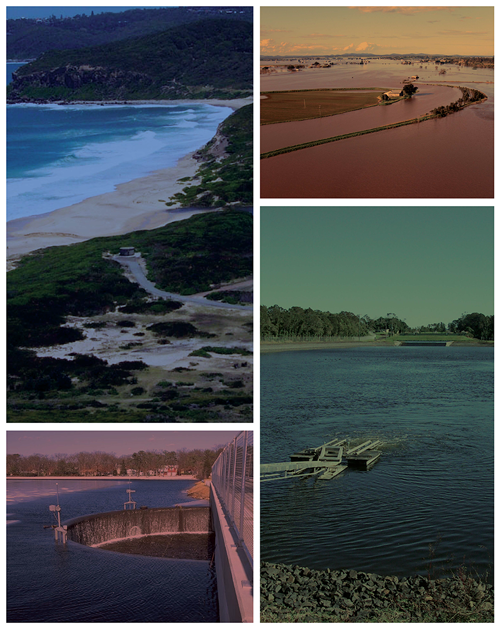A 2-day Workshop entitled “Stormwater Management (source control)” has been organised by EEA (Engineering Education, Australia) for Thursday/Friday 2/3 June 2016 in Sydney. The Notes provided in the course are based on the content of the award-winning manual “WSUD: basic procedures for ‘source control’ of stormwater – a Handbook for Australian practice” edited by Professor John Argue AO (University of South Australia). This document is endorsed by Stormwater Industry Association (SIA), Australian Water Association (AWA) and by Dept of Water, Western Australia; it is included as a major reference in Book 9, Chapter 5 of the 2015 Australian Rainfall Runoff Revision (AR&R).
The content features a balance between the three domains of WSUD (stormwater) practice – quantity control, pollution control and stormwater harvesting. Serious issues of stormwater management in Australia are posed by the prospect of 35 million population of Australia by 2050.
- How will Sydney’s existing stormwater infrastructure and that of other major population centres in NSW cope with change under the ‘high density’ option presently being implemented across the State ?
- What strategies can be adopted to enable existing (competently-performing) infrastructure to manage these changes without expensive (conventional) upgrade?
- How can re-development in catchments with existing under-performing stormwater infrastructure be managed to enable the existing in-ground works to progressively meet greater demand without expensive (conventional) upgrade?
- Must the creeks and natural waterways falling within the jurisdictions of metropolitan and regional municipal agencies within and outside Sydney be sacrificed to hard-lining in the wake of the proposed expansion?
Positive answers to these and many other questions based on WSUD ‘source control’ practice will be provided in the Workshop as well as a 30-minute presentation by Dr Markus Botte on how the City of Gosnells has incorporated this practice into its cost-effective urban re-growth strategy.
The Workshop will also include results of continuous simulation modelling of high-performing filter-bioretention systems enhanced by treatment taking place in parent soil masses; the fate of dissolved pollutants is singled out for particular attention.
The short course includes: design procedures based on state-of-the-art analyses and best overseas practices adapted to Australia-wide conditions; case study illustrations drawn from field installations with between 10 and 18 years of Australian operational history; design ‘worked examples’; introduction and access to rainwater tank sizing software applicable across Australia. The Workshop will be led by Professor John Argue AO.
Why you should attend the Workshop:
- It is presented only once per year in Sydney;
- It covers the three main domains of WSUD practice – quantity (urban flooding), quality (pollution treatment/control) and stormwater harvesting – in a comprehensive, integrated manner;
- The (stormwater) retention practices covered in the Workshop are offered in the 2015 AR&R Revision alongside those of detention practice (Book 9, Chapter 5);
- It earns participants 32 hours of CPD credit with Engineers Australia.
More information about the workshop including course content, cost and Registration Forms is available on the EEA website http://www.eeaust.com.au/ or by calling Damian on (03) 9321 1700.



Leave a Reply